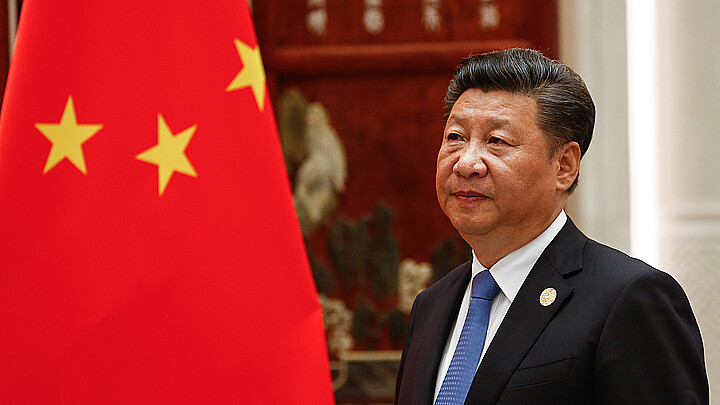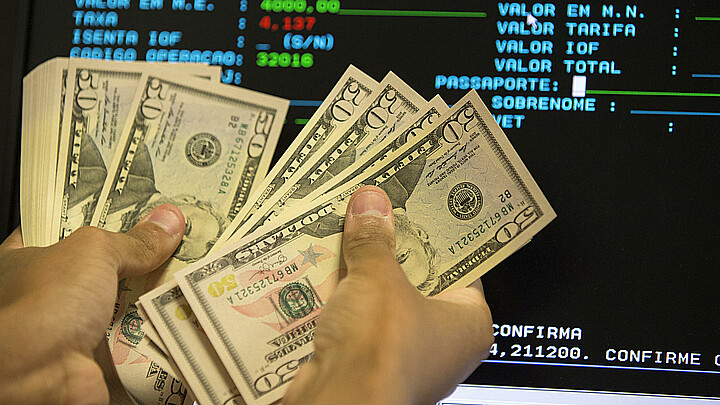Business
Biden tries to define away ongoing supply chain crisis, declare victory
New queuing system has alleviated port congestion without addressing distribution bottlenecks causing shortages; reduced number of vessels anchored offshore reflect dispersal of ships, not unloading.
December 2, 2021 10:56pm
Updated: December 3, 2021 6:33pm
President Biden is touting his administration's handling of the supply chain crisis, claiming the situation is all but resolved. However, the bottleneck that helped bring the supply chain to a virtual standstill remains in place.
On Wednesday, Biden said the supply chain is in "very strong shape" ahead of the holiday season.
"It's not because of luck," Biden said. "We averted potential crisis by figuring out what needed to get fixed, and then we brought the people together to do the hard work of fixing it."
Biden dismissed reports of empty store shelves nationwide, saying, "For the vast majority of the country that's not what's happening."
The president then credited his team with what he described as significant progress in restoring the flow of the supply chain.
"Because of the actions the administration has taken in partnership with business and labor, retailers and grocery stores, freight movers and railroads, those shelves are going to be stocked," he said.
The country has faced supply shortages across virtually all industries this year as global economies recover from COVID-19 and struggle to meet increased consumer demand. For months, cargo ships coming into the Ports of Los Angeles and Long Beach, which handle some 40% of the country's containerized imports, have been forced to loiter off the coast of California, unable to unload the products on board, creating a logjam. Less supply has helped drive up prices.
Biden said Wednesday that, thanks to his administration's efforts to keep the ports open 24/7, the number of container ships waiting to unload has decreased by 40%.
Gene Seroka, executive director of the Port of Los Angeles, used that same figure on Tuesday.
"The number of ships at anchor has decreased by more than 40% over a four-week period," Seroka said during a press conference.
Biden and Seroka are correct that the number of ships at anchor or loitering has decreased — but only for those vessels within 40 miles of the ports.
Overall, the logjam of cargo ships remains as severe as ever. The reason why is simple: Since last month, a new queuing system has encouraged and led many ships to move outside of the ports' 40-mile zone to a Safety and Air Quality Area (SAQA) that extends 150 miles to the west of the ports and 50 miles to the north and south.
As a result, some observers have argued the supply chain crisis is easing, backing Biden's version of events.
"In mid-November, 86 container ships were floating around San Pedro Bay waiting for a berth," explained Steve Rattner, who served as auto-industry czar in the Obama administration. "Today, just two weeks later, that figure is down to 44."
The sharply reduced count of 44 ships anchored offshore includes only those ships waiting within the 40-mile zone as of midday Tuesday, according to data from the Marine Exchange of Southern California. American Shipper estimated that there were another 50 container ships waiting outside the SAQA, making for a total of 94 ships.
"Problem solved?" wrote FreightWaves' Greg Miller just before Thanksgiving. "Far from it. The waiting container ships are still out there — more of them than ever. It's just that more are over the horizon, where you can't see them, thanks to the successful implementation of a new queuing system that began last week."
The all-time high number of ships waiting for berths at the Ports of Los Angeles and Long Beach is 96, which occurred on Monday.
Outside of the SAQA, there are dozens of additional ships with calculated times of arrival to enter the ports, according to MarineTraffic, which provides real-time information on the movements of ships.
FreightWaves, which provides news and data to the global freight industry, tracked some of these ships and found at least 11 are waiting off places as distant as Mexico, Japan, and Taiwan. They don't count as vessels waiting to enter the two California ports because they're not in the 40-mile zone.
One ship flagged by FreightWaves left Yantian, China, for Long Beach on Nov. 7. It was assigned a time of arrival of Nov. 25 and is now loitering offshore of Hokkaido, Japan, long after it was supposed to unload supplies in the U.S.
The new queuing system was ostensibly devised to lower harmful emissions and improve safety by dispersing ships more widely. It has alleviated congestion at the ports of Los Angeles and Long Beach as intended in, but this achievement has no bearing on the supply chain crisis — except insofar as it removes from view the most striking and accessible material evidence of the distribution bottleneck.
"A more cynical view has emerged," wrote Miller, namely "that an unstated goal is to erase a politically nettlesome photo op — attention-grabbing imagery of idle container ships stretching off into the distance."
Of course, the health of the supply chain isn't completely determined by the Long Beach and Los Angeles ports. Indeed, retail inventories in stores are up, and Walmart CEO Doug McMillon said during a White House meeting this week that throughput has increased with the help of the federal government.
But there's no clear indication that the California logjam will ease anytime soon, and reports indicate families are feeling the effects of disruptions to the supply chain — even when it comes to chicken tenders.
"The shelves have been empty recently, restaurants have been out of chicken tenders, and that makes it very difficult when you have kids that have limited options," one Arizona mom told NBC.
During his speech, Biden pointed to a survey by Etsy, an e-commerce company, showing many of its dealers are less concerned about the supply chain than they were last year. However, many Etsy sellers are reportedly struggling to find an array of supplies that they need.
Supply chain experts warn we could see significant shortages well into next year, which doesn't bode well for the economy more broadly. A new report from the Federal Reserve notes that supply chain disruptions constrain economic growth.
However, Biden didn't indicate concern on Wednesday."By working with business and labor, my administration's been able to handle the huge surge in goods moving through some of our biggest ports," he said. "And that's translated into shelves across our country being well stocked."










